Switzerland, a nation celebrated for its majestic natural beauty and high quality of life, is a dream destination for many travel enthusiasts. However, the cost of traveling to Switzerland can be daunting. Worry not, because with this DIY travel guide to Switzerland, you can fully explore the beauty of this country without breaking the bank on expensive tours. Let’s plan an exciting and budget-friendly journey to conquer Switzerland with “Du lịch khắp thế gian”!
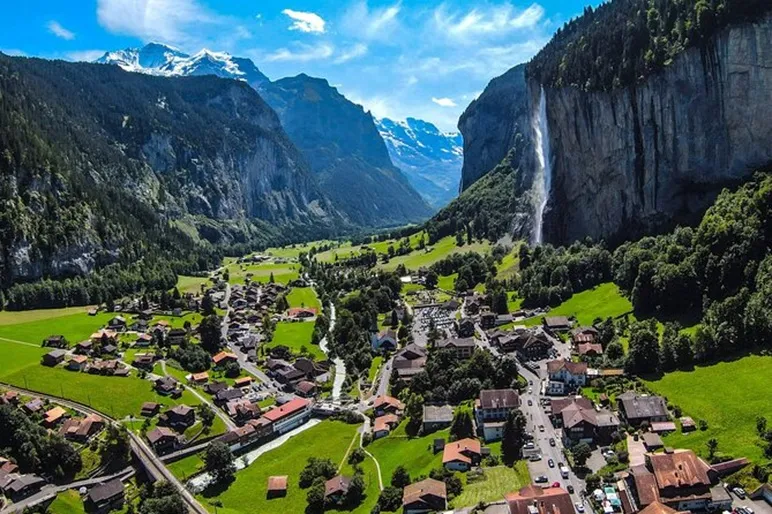
A Glimpse into the “Roof of Europe” – Switzerland
The Swiss Confederation is a landlocked country located in the heart of Europe, bordering Germany, France, Italy, Austria, and Liechtenstein. Covering an area of approximately 41,285 km² with a population of nearly 9 million, Switzerland is a multilingual nation with four official languages: German, French, Italian, and Romansh. The Swiss Franc (CHF) is the commonly used currency, and the country observes UTC+1 in winter and UTC+2 in summer.
Switzerland’s terrain is predominantly mountainous, with over 60% of its landmass situated in the Alps and Jura mountain ranges. The Swiss landscape is breathtaking, featuring snow-capped peaks, crystal-clear lakes, and tranquil green valleys. Switzerland is divided into 26 cantons, each with a high degree of autonomy. Popular cities and cantons attracting tourists include Zürich, Geneva, Bern (the capital), Lucerne, Interlaken, and Zermatt (home to the majestic Matterhorn).
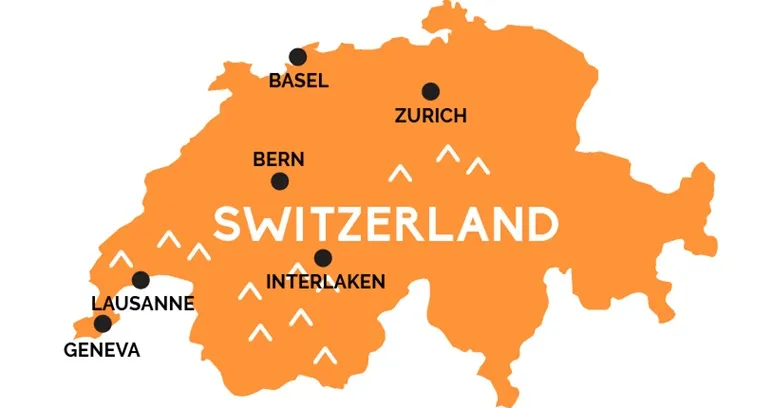
As one of the most developed countries in the world, Switzerland is renowned for its neutral political stance, high standard of living, and top-tier healthcare and education systems. The Swiss economy is driven by key industries such as finance and banking, pharmaceuticals, precision engineering, and luxury tourism, particularly snow and resort tourism. Switzerland’s GDP per capita is approximately USD 94,000, reflecting its high quality of life and sustainable development.
Switzerland is not only famous for world-class watches, premium chocolate, and reputable banking brands but also captivates visitors with its rich travel experiences. From scenic train journeys like the Glacier Express and exploring historic towns like Gruyères to savoring hearty cheese fondue, Switzerland is an ideal destination for those who appreciate nature, culture, and meticulous detail.
Essential Information for Your DIY Switzerland Trip
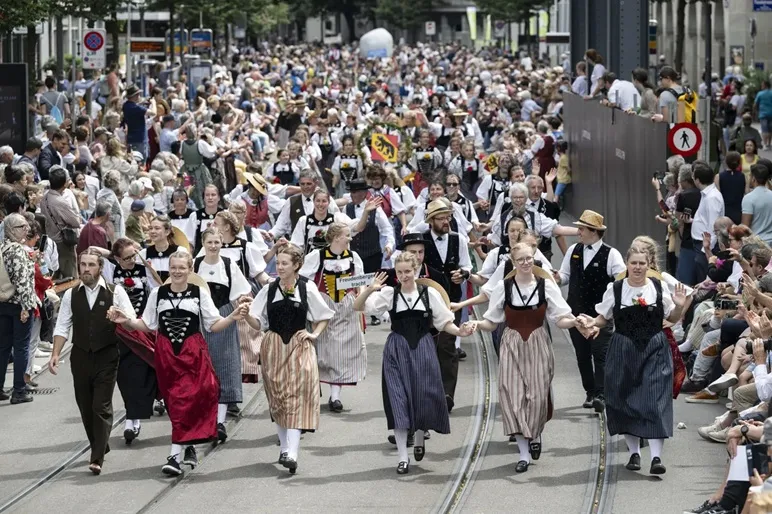
Safety
Switzerland is known as one of the safest and most stable countries in Europe. Crime rates are low, the police force is efficient, and the legal system is stringent. Tourists can feel safe walking around at night, even in major cities like Zurich, Geneva, or Bern. However, to ensure absolute safety, it’s still advisable to be mindful of your belongings in crowded areas such as train stations, airports, or popular tourist spots.
People
Swiss people are known for their reserved, polite demeanor and respect for privacy. They are recognized for their punctuality, work efficiency, and high sense of responsibility. While they may initially seem somewhat reserved, they are willing to help and share when you show respect and openness. Each region of Switzerland has its distinct cultural nuances depending on the primary language spoken (German, French, Italian), creating a fascinating diversity in lifestyle and communication.
Language
Switzerland has four official languages: German (most prevalent), French, Italian, and Romansh. In major cities and tourist areas, English is also widely spoken, especially in hotels, restaurants, and shopping centers. However, knowing a few basic phrases in German or French will endear you to locals and enhance your travel experience.
Currency
Switzerland does not use the Euro; instead, the Swiss Franc (CHF) is the official currency. Exchange rates fluctuate, but you can easily find up-to-date exchange rate information on financial websites or banking apps. While some shops or hotels might accept Euros, the exchange rate is usually unfavorable. Card payments are widely accepted and convenient in Switzerland, but it’s still wise to carry some cash, especially in smaller towns or mountainous areas.
Internet and Power Outlets
Switzerland’s telecommunications infrastructure is highly advanced, with 4G/5G mobile networks covering most of the country, including high mountain regions. Tourists can purchase travel SIM cards at airports or convenience stores at reasonable prices. Free Wi-Fi is also widely available in hotels, restaurants, and resorts. Power outlets in Switzerland are Type J (three-pin round), different from the two-pin type common in Europe, with a standard voltage of 230V, 50Hz. You should bring a power adapter for your electronic devices.
Best Time to Visit Switzerland
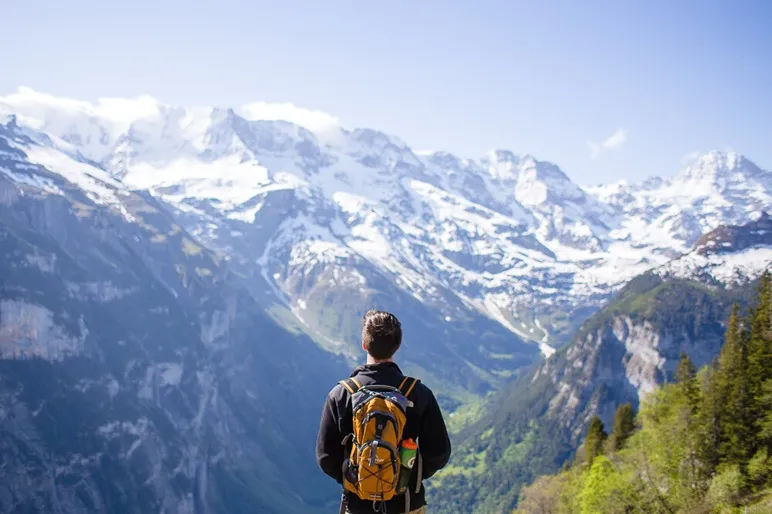
Switzerland has a continental temperate climate with four distinct seasons, each offering unique beauty. Depending on your personal preferences and trip objectives, you can choose the most suitable time to fully enjoy the beauty of this country.
- Spring (March to May): Spring is when Switzerland “awakens” after a long winter. Average temperatures range from 8°C to 18°C (46°F to 64°F), trees begin to sprout, and flowers bloom vibrantly across valleys and lakesides. This is an ideal time to stroll through historic towns, visit cities, and enjoy the fresh natural beauty.
- Summer (June to August): Summer is peak tourist season in Switzerland, especially for those who love outdoor activities like trekking, hiking, or exploring mountain lakes. Daytime temperatures range from 20°C to 30°C (68°F to 86°F), with dry, sunny weather perfect for conquering famous hiking trails. However, summer is also the busiest and most expensive time, so book in advance for better deals.
- Autumn (September to November): Autumn in Switzerland is wonderful for those who appreciate romantic and tranquil scenery. Mountain landscapes gradually turn into brilliant shades of gold and orange, particularly around Lake Geneva or the Lauterbrunnen Valley. Average temperatures range from 10°C to 20°C (50°F to 68°F), not too cold, and tourist crowds significantly decrease. This is an ideal time to enjoy local wines and traditional Swiss cuisine.
- Winter (December to February): Winter is a paradise for those passionate about skiing and winter sports. World-class ski resorts like Zermatt, St. Moritz, and Grindelwald are bustling with tourists from around the globe. Temperatures can drop below 0°C (32°F), snow falls heavily, and mountain landscapes become magical. Additionally, the year-end holiday season lights up major cities, making it a worthwhile experience.
According to DIY Switzerland travel experiences, the best times to visit Switzerland are spring (May – June) or autumn (September – mid-October). These periods offer pleasant weather, vibrant scenery, and more reasonable prices compared to peak season.
DIY Switzerland Travel Costs: How Much Money Do You Need?
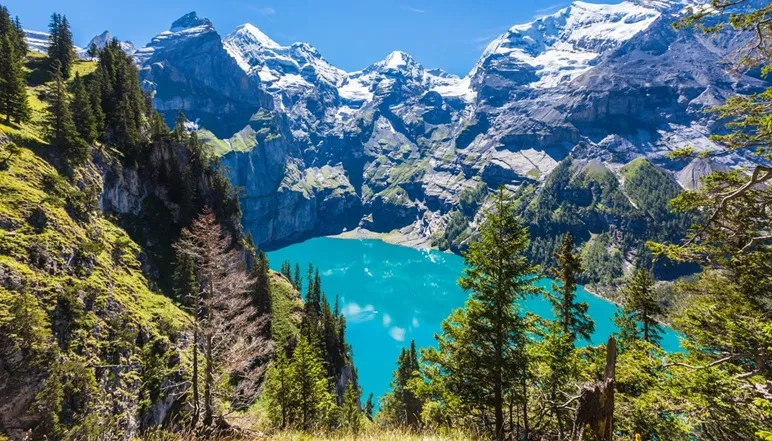
Switzerland is known as one of the most expensive countries in Europe, so careful financial preparation is essential when planning a DIY trip here. For budget-conscious travelers, a day can cost from CHF 90 upwards. However, the average cost for a comfortable experience typically ranges from CHF 140–200 per day.
DIY travel costs in Switzerland include various expenses, notably:
Swiss Visa Application
To enter Switzerland, Vietnamese citizens need a Schengen visa. This powerful visa allows free movement within the 29 European countries in the Schengen Area. The Swiss visa application process is detailed, with clear requirements regarding finances, employment, and itinerary. Visa application fees usually range from 4 to 7 million VND, depending on the visa type and support services.
Flight Tickets
Currently, there are no direct flights from Vietnam to Switzerland; you will need at least one stopover, such as Singapore, Doha, Istanbul, or Bangkok. Round-trip ticket prices typically range from 18 to 40 million VND, with flight times ranging from 17-35 hours. Ticket prices can vary depending on booking time, airline, and class. To save costs, book your flight tickets at least 2-3 months in advance and choose budget airlines or promotional programs.
Accommodation Costs
Accommodation prices in Switzerland are quite high, especially in major cities and popular tourist towns. However, you can still find options to suit your budget:
- Dorm room (hostel): from CHF 35/night upwards
- 3-star hotel: from CHF 120–180/night
- 4-star hotel: from CHF 200–350/night
- 5-star hotel: from CHF 400/night upwards
To save on costs, consider Airbnb, guesthouses, or staying in suburbs near city centers. Booking early also gives you more choices and better prices.
Food Costs
Swiss cuisine is influenced by many cultures (German, French, Italian), making it diverse, but overall, food costs are high. You can refer to the following price ranges:
- Quick meal at a supermarket or convenience store: from CHF 10–15
- Meal at a budget restaurant: about CHF 20–30
- Mid-range restaurant: from CHF 35–60/meal
- Espresso coffee: about CHF 3–5
- Swiss beer: from CHF 6–9/glass
To save on food costs, you can cook your own meals if your accommodation has a kitchen, buy groceries at popular supermarket chains like Coop, Migros, or Aldi, or try street foods like Bratwurst (grilled sausage) and Rösti (Swiss-style fried potatoes).
Budget-Friendly Transportation in Switzerland
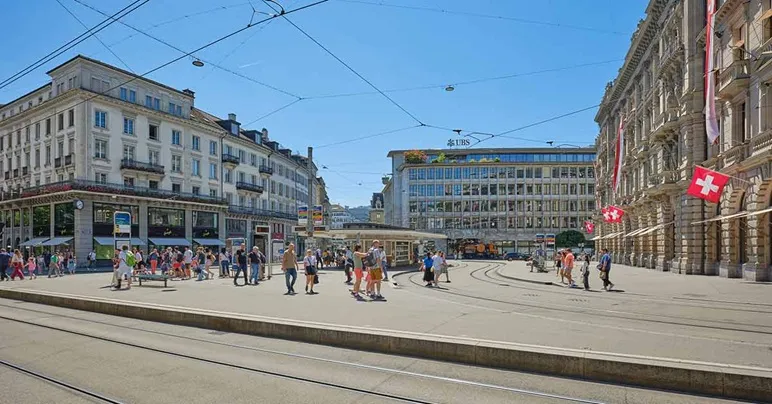
Airport to City Center Transportation
Major international airports in Switzerland like Zurich (ZRH), Geneva (GVA), or Basel (BSL) all have convenient public transportation links to city centers.
Zurich Airport (ZRH)
- Train: This is the fastest and most convenient way to get to Zurich city center. Trains run frequently, take only about 10-15 minutes, and cost around CHF 6.80.
- Bus: Buses are also an option to travel from Zurich Airport to the city, but travel time may be longer than by train.
- Taxi: Taxis are fast and private, but more expensive, costing about CHF 60-80 to reach the city center.
Geneva Airport (GVA)
- Train: Trains are the quickest way to get from Geneva Airport to the city center, taking only about 7 minutes and costing around CHF 3. Notably, you can get a free train ticket (Geneva Free Ticket) at the airport within 80 minutes of landing.
- Taxi: Taxis are convenient if you are traveling in a group or have a lot of luggage; taxi fares from Geneva Airport to the city center are about CHF 35-50.
Getting Around Cities
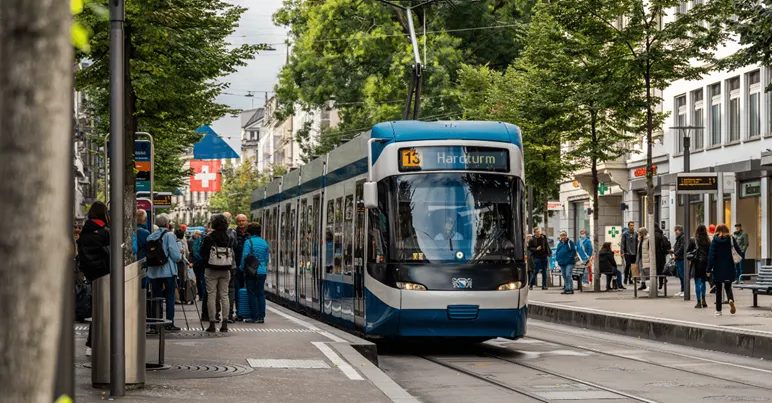
Public Transportation
Switzerland’s public transport system is considered one of the best in the world, including trams, buses, subways (in Lausanne), and boats (in lakeside cities). Ticket prices vary by city, usually ranging from CHF 2.50 to 5 per trip. To save costs, buy a Day Pass or Swiss Half Fare Card for a 50% discount on public transport and intercity train travel.
Taxis and Ride-Hailing Apps
Taxis in Switzerland are quite expensive, typically starting at CHF 6 and CHF 3-4/km. Ride-hailing apps like Uber operate in major cities like Zurich and Geneva, and prices may be cheaper than traditional taxis but still higher than the European average.
Bicycles and Walking
Many cities in Switzerland like Bern, Basel, and Zurich have well-developed bicycle lane systems. You can rent bikes for CHF 15-30/day or use public bike-sharing services. Additionally, Swiss cities are very pedestrian-friendly, and you can easily explore attractions on foot.
Traveling Between Cities
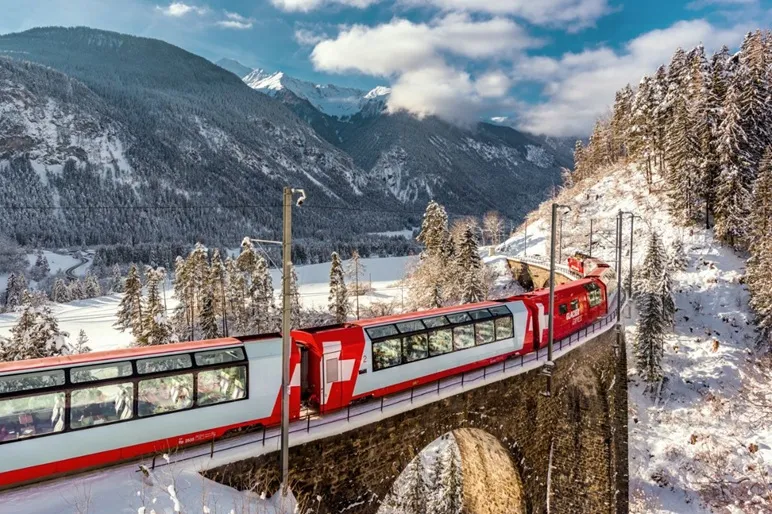
Intercity Trains (SBB/CFF/FFS)
The Swiss national railway system (SBB) is the most popular and efficient way to travel between cities and towns. Trains are fast, punctual, have Wi-Fi, and offer spectacular scenery along the way. To save costs, consider Swiss Travel Passes (unlimited travel for multiple days) or Saver Day Passes (discounted day tickets if booked early).
Scenic Tourist Trains
Famous routes like the Glacier Express, Bernina Express, and GoldenPass Line are not just transportation but also scenic journeys through the mountains. Ticket prices may be higher than regular trains, and you should book in advance to secure a seat.
Intercity Buses
Intercity buses are less common than trains, but you can still find budget bus lines like FlixBus connecting Switzerland with neighboring European countries. However, within Switzerland, trains are still the preferred option.
Car Rentals
Renting a car is a flexible option if you want to explore remote countryside areas or follow a private schedule. However, car rental, gas, and parking costs in Switzerland are quite high, and you need an international driving permit and experience driving on mountain roads.
Top 10 Must-Visit Cities and Towns in Switzerland
Each city and town in Switzerland offers a unique travel experience. Here are 10 of the most outstanding destinations you shouldn’t miss on your DIY Switzerland adventure:
1. Zurich City

Zurich, Switzerland’s largest city, is a leading financial, cultural, and educational center. Blending the old and the new harmoniously, Zurich offers many attractions, such as the Altstadt old town, Grossmünster Church, Lake Zurich, the Swiss National Museum, and Bahnhofstrasse shopping street.
2. Geneva City
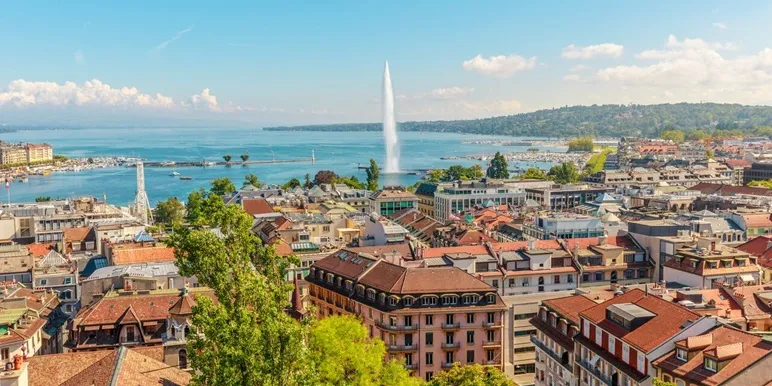
Geneva, an international city hosting the United Nations headquarters and many other international organizations, is famous for picturesque Lake Geneva, the Jet d’Eau fountain, the Vieille Ville old town, St. Pierre Cathedral, and the Patek Philippe Museum.
3. Zermatt Town

Zermatt, a car-free town at the foot of the majestic Matterhorn, is a paradise for nature and winter sports enthusiasts. Notable attractions in Zermatt include the Matterhorn peak, the Gornergrat Railway, Matterhorn Glacier Paradise, and the ancient village of Hinterdorf.
4. Lucerne City
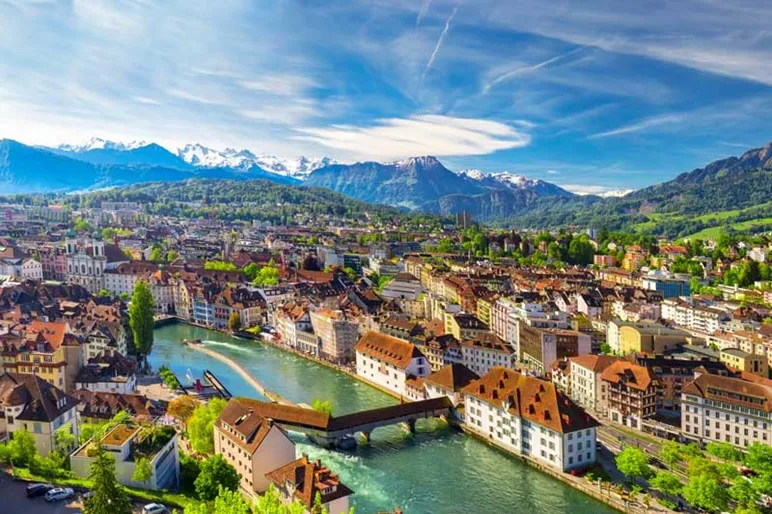
Lucerne, a beautiful city on Lake Lucerne, is famous for the historic Chapel Bridge (Kapellbrücke), the Wasserturm water tower, the Altstadt old town, the Lion Monument, and Mount Pilatus.
5. Basel City
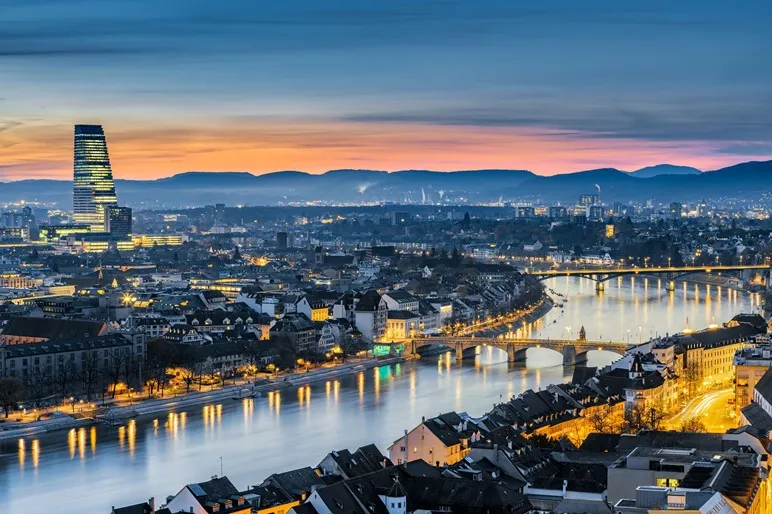
Basel, Switzerland’s cultural city, is known for its many art museums, the unique Fasnacht festival, and architecture blending classic and modern styles. Main attractions in Basel include the Altstadt old town, Basel Minster Cathedral, the Kunstmuseum Basel art museum, and the Rhine River.
6. St. Moritz Town
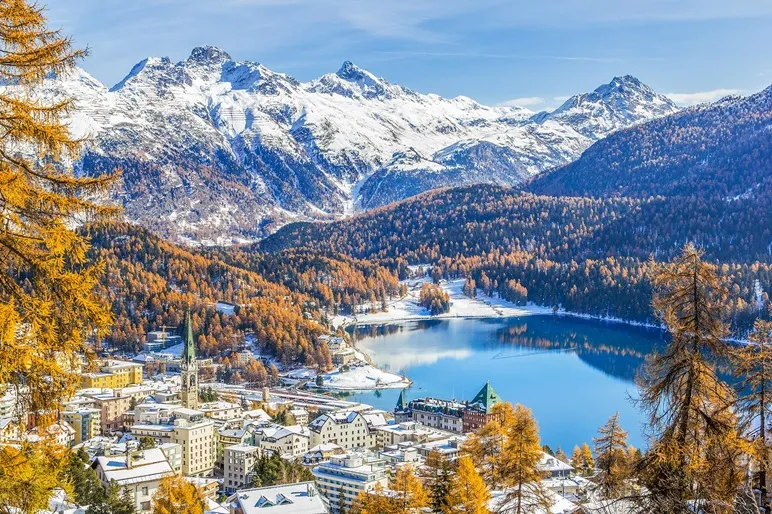
St. Moritz, a luxury resort town in the Engadin region, is the cradle of winter tourism. It is famous for Lake St. Moritz, the Glacier Express train, Corviglia mountain, the Engadiner Museum, and Via Serlas shopping street.
7. Bern Capital
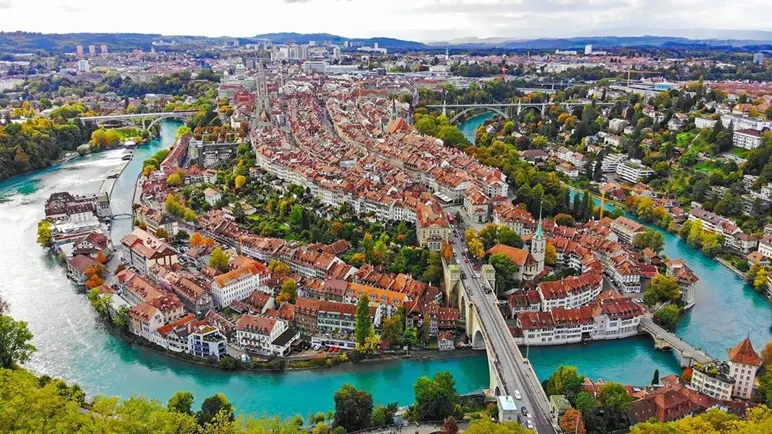
Bern, the capital of Switzerland, is a UNESCO World Heritage site with a well-preserved medieval old town. Notable attractions in Bern include the Altstadt old town, the Zytglogge clock tower, the Parliament Building, Munster Cathedral, and the Rosengarten rose garden.
8. Interlaken Town

Interlaken, a famous tourist town nestled between Lakes Thun and Brienz, is a hub for exploring the Jungfrau region. Popular destinations in Interlaken include Höhematte Park, Harder Kulm observation deck, Lake Brienz, Lake Thun, and the Jungfrau railway.
9. Lausanne City
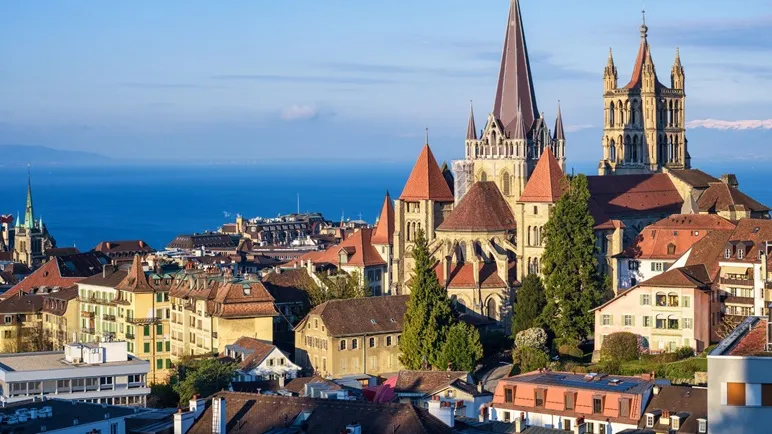
Lausanne, a city on Lake Geneva, is the cultural, educational, and sports center of the French-speaking region. It is famous for Lausanne Cathedral, the Vieille Ville old town, the Olympic Museum, Palud Square, and the Flon district.
10. Grindelwald Town

Grindelwald, a beautiful mountain town at the foot of Mount Eiger, is an ideal destination for nature lovers and outdoor enthusiasts. Must-see attractions and experiences in Grindelwald include First peak, Lake Bachalpsee, Eiger peak, the Jungfraujoch railway, and Glacier Canyon.
Must-Try Foods When Traveling to Switzerland
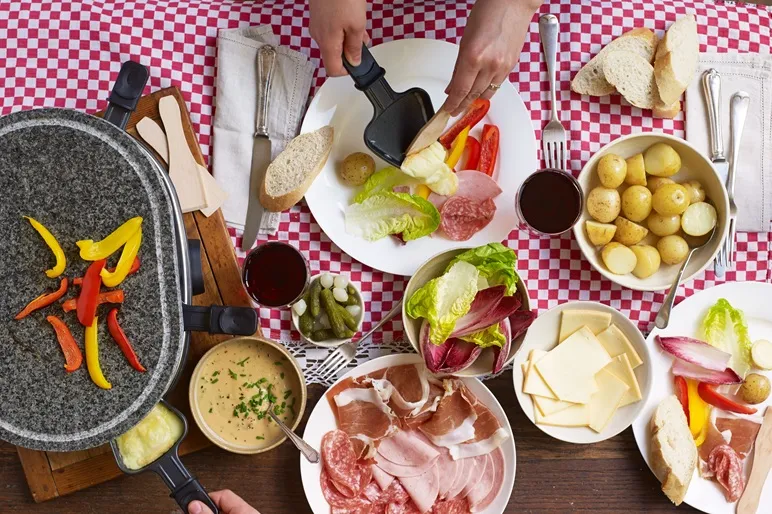
Swiss cuisine is rich in flavors characteristic of the Alps and the cultural influences from neighboring countries. Here are some dishes you should try when traveling to Switzerland:
- Fondue (Cheese Fondue): Switzerland’s national dish, with delicious melted cheese, usually served with bread, potatoes, or vegetables.
- Raclette: Similar to fondue, raclette is melted cheese scraped directly onto boiled potatoes and other accompaniments.
- Rösti: Crispy pan-fried potato cakes, often served as a side dish for breakfast or lunch.
- Zürcher Geschnetzeltes: Creamed veal with mushrooms, a Zurich specialty, usually served with rösti or egg noodles.
- Bircher Müsli: Oatmeal mixed with yogurt, fresh fruit, and nuts, a nutritious and popular breakfast option in Switzerland.
- Swiss Chocolate: Don’t miss world-famous Swiss chocolate with many renowned brands like Lindt, Toblerone, Läderach.
Additionally, you should also try regional specialties such as Saucisse aux choux (cabbage sausage), Basler Läckerli (Basel gingerbread cookies), Tartes aux noix (walnut tarts), Polenta (cornmeal porridge), and Alplermagronen (Alpine macaroni and cheese).
Suggested 14-Day DIY Switzerland Itinerary
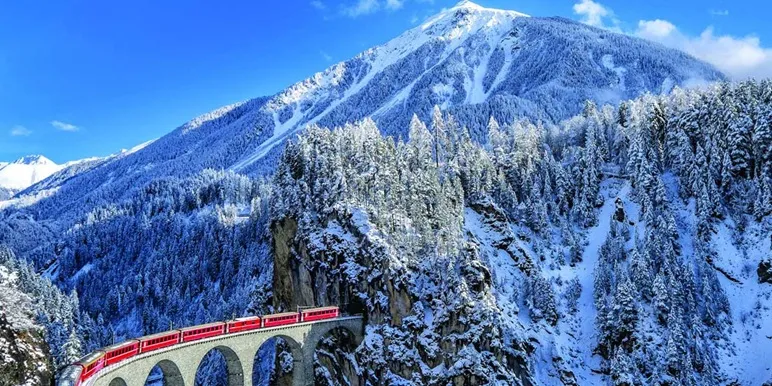
To help you have a complete Switzerland adventure, “Du lịch khắp thế gian” suggests the following 14-day DIY itinerary:
- Days 1-2: Explore the vibrant city of Zurich.
- Days 3-4: Immerse yourself in the ancient beauty of Lucerne and conquer Mount Pilatus or Rigi.
- Days 5-8: Discover the Interlaken, Lauterbrunnen, Wengen, Mürren, and Grindelwald region, experience outdoor activities, and conquer Jungfraujoch.
- Days 9-10: Admire the majestic Matterhorn in Zermatt and explore Gornergrat.
- Days 11-12: Relax in Montreux, Vevey, and Lausanne by picturesque Lake Geneva.
- Days 13-14: Explore the international city of Geneva and prepare for your journey home.
Note that this is just a suggested itinerary; you can adjust it to suit your preferences and time.
With these DIY Switzerland travel tips shared above, “Du lịch khắp thế gian” hopes you will have a memorable and fulfilling trip to this beautiful country. Wishing you wonderful experiences and successful “conquering of Broken Top Mountain” on your Swiss adventure!